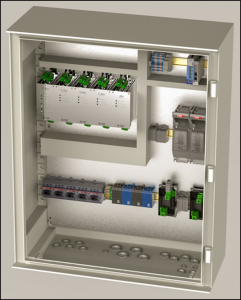Solar innovator TSS4U uses ABB technology to make energy more sustainable
TSS4U of the Netherlands supplies innovative, off-grid solar power systems to critical applications worldwide, helping companies replace diesel generators with sustainable energy. Telecoms towers, oil and gas facilities, and water treatment plants rely on TSS4U’s solar systems to provide reliable power in the most demanding environments.

Power regulation plays a crucial role in ensuring the safety, reliability, and efficiency of these systems
ABB’s expertise and smart Emax 2 circuit breaker technology play an important role in TSS4U’s solutions, protecting against overloads and short circuits.
ABB supports TSS4U in complying with the switching and protection requirements and regulations
TSS4U’s Operations Director and Founder, Jan Willem Linsen, said: “Customer specifications for solar power systems are extensive and complex. ABB supports us in complying with the switching and protection requirements and regulations. Their global presence and technical support make it easier for us to tailor solutions to meet local standards.”
Jan Willem Linsen, TSS4U
“ABB’s circularity framework and transparency make them a reliable and progressive partner in sustainable solutions. They share our passion for innovation and circularity as we work together on more responsible ways of generating energy”





























